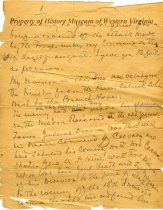Person Record
Metadata
Name |
Mahone, William |
Related Records
-
After-Photographs of Crater Action - 1892
This Object ID is made up of two pages. Each page contains two photograph images, all of which refer to "The Crater". Each view (#1, 2, 3, and 4) has an explantion, beneath the image, of what the photo is revealing.
Record Type: Archive
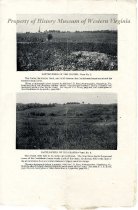
-
Artillery Experiences at Petersburg & Elsewhere by Dr. Joseph W. Eggleston - January 3, 1895
Eggleston's letter is fragile, the paper is aged, and the edges are beginning to break off. The type is also very light. The letter was used as a talk given to the A. P. Hill Camp of Confederate Veterans, January 3, 1895. Eggleston's opening remarks mention that the current generation shows little interest in the events that occurred between 1861-1865. They are neglecting to preserve the history for future generations. But their children will ...
Record Type: Archive
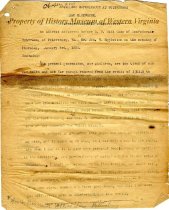
-
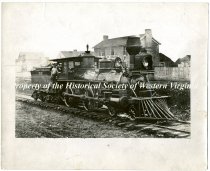
-
Bernard note - 1894
A note, believed to be written by George S. Bernard, as an added entry to an already written document. The content states, by an unknown person of authority, " ...tell General Mahone that he can pull back by any means he thinks best", but the writer then goes on to doubt that the task will be accomplished.
Record Type: Archive
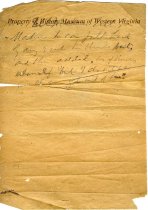
-
Biographic Catalogue of the Portraits in the Confederate Memorial Institute - 1929
Booklet printed by the Service Press, Richmond, by the R.E. Lee Camp, No. 1 of Confederate Veterans. Catalog is of brief biographic data of portraits that were on view in the "Battle Abbey" of the Confederate Memorial Institute. Catalog contains no photographs, but birth and death dates, plus campaigns each individual commemorated participated in.
Record Type: Archive

-
Cameron Memoranda for Biography - 1892-1896
Similar to Object ID 2009.75.181 biography. Born November 19, 1892. School to Charles Campbell and Thomas S. Davidson. North Carolina Military Academy, Hillsboro, for two sessions in 1858. Moved to Missouri 1859 and clerk in St. Louis at Memphis Packet Company until spring 1861. At Camp Jackson with Missouri Minute Men when they were captured by General Lyon, but escaped in the confusion and left the same night in the last boat that went South...
Record Type: Archive

-
Closing Days of the Army of Northern Virginia by William Mahone - July 25, 1895
Bernard has cut and pasted the first two pages of Mahone's transcribed letter, and has inserted a biography of Mahone, along with a third page (inserted by Bernard) to finish the biography. The letter then continues for 29 pages, where at the bottom of the page an addendum is inserted. The last two pages are by Bernard. Mahone was born in Southhampton County on December 1, 1826; he was educated at VMI, graduating in 1847. He taught school for ...
Record Type: Archive
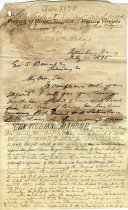
-
Crater Legion Membership Card - November 1, 1903
Membership Card titled "Headquarters Grand Bivouac, Crater Legion" issued to Robert Frigna, Company K, 12th Virginia Regiment, of Mahone's Brigade. The member is entitled to a Medal of Honor that will be presented on the battlefield, November 6, 1903. There is a name at the bottom of the card that can not be determined. The name begins with J. M. the last name begins with an L.
Record Type: Archive
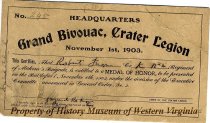
-
Delevan Bates Letter - July 9, 1892
Lieutenant Bates (later a General) was appointed Colonel of the Thirtieth U.S. Colored Troops. Their first charge was made in front of Petersburg, and Bates led the colored division. Colonel Bates was shot through the head inside the Confederate lines. After the war (1873), he went West, and eventually became Mayor of Aurora, Nebraska. He also was vice-president of the First National Bank of Aurora. Bates informs Bernard that he thinks Colonel...
Record Type: Archive
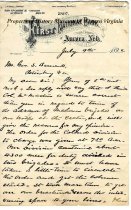
-
Early Days of the War. - July 1895
George S. Bernard of Petersburg, Virginia, kept a diary after entering military service. He was a member of the Petersburg Riflemen, which was organized in December 1859 in response to John Brown's raid. The Petersburg Riflemen were one of five regiments that formed the 4th Battalion of Virginia Volunteers (later the 12th Virginia Infantry). The typed page, which is based on Bernard's wartime diary, ends in mid-sentence. Glued to the bottom o...
Record Type: Archive

-
Elmodam Nathaniel Poarch letter on Malvern Hill/Second Manassas - November 9, 1895
The full image of the letter by Poarch is split in half, as the paper is folded in the middle. Image one is actually pages 7 and 1, followed by pages 4 and 2, 8 and 3 and ends with 5 and 6. The half that is page 1 has aged so that it is hard to read. The last image is a note sheet written by George Bernard. Three battles are mentioned "The Seven Days (25 June-1 July, 1862)," "Malvern Hill (1 July, 1862) ",and "Second Manassas (29 August-30 August...
Record Type: Archive
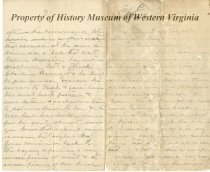
-
Fight at Malvern Hill - Article written by George S. Bernard - September 23, 1897
This article, printed in the September 26, 1887 issue of the Petersburg Index Appeal, was written by George S. Bernard on September 23, 1887. The newspaper is in pieces and some lines can not be read. The article is very detailed. Many paragraphs were taken from the reports of the officers (Northern and Southern) directly involved in the battle. To help summarize the article the names of the individuals who gave a report or relate their recoll...
Record Type: Archive
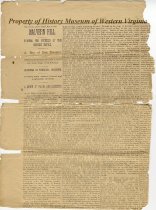
-
Fredericksburg to the Valley of Virginia. - November 1893
George S. Bernard spoke to the R. E. Lee Camp of Confederate Veterans, in Richmond on November 3, 1893, about his experiences during the Gettysburg Campaign. His talk was published in the newspaper. Bernard used his wartime diary and notebooks as source material for the talk. After the Battle of Chancellorsville, Mahone's Brigade made camp at Salem Church, and then marched to Fredericksburg to relieve Barksdale's brigade. After a week, the reg...
Record Type: Archive
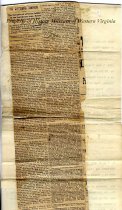
-
George Jefferson Hundley recollections - April 29, 1895
George Jefferson Hundley was born near Mobile, Alabama in 1838. On his mother's side he was the great-great-grandson of Peter Field Jefferson, who was an uncle of President Thomas Jefferson. Orphaned at an early age he was reared by relatives in Amelia County, Virginia. He studied law in Lexington, Virginia, and was licensed to practice in 1860. Hundley enlisted as a private in the 19th Virginia Infantry, where he was promoted to 2nd Lieutenant....
Record Type: Archive
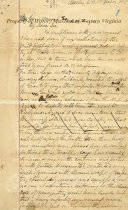
-
James Kemp - June 24, 1894
Fort Steadman is also spelled Stedman. This newspaper clipping was written by James Campbell Kemp, who lived in Petersburg and witnessed (from a distance) the fall of Fort Steadman on March 25, 1865. Kemp was born in Glasgow, Scotland, and came to America in 1852. He was a bookkeeper for a wholesale grocer, later becoming a bookkeeper-cashier for a tobacco manufacturer. From 1888 until 1892, he was the clerk for the mayor of Petersburg. The ar...
Record Type: Archive

-
J.E.L. (John E. Laughton) Jr. Post Card - June 17, 1891
J.E.L., Jr., gives Bernard a series of names, what units they were attached to, and some of their actions. J.V.L. McCreery was a sergeant in the 1st Company of the Richmond Howitzers. He says that the artillery supported by Mahone's Brigade on May 2nd, 1863, was Manly's North Carolina Battery, commanded by Captain Manly (Manly was the son of an ex-governor of N.C.), the 1st Co. of the Richmond Howitzers, commanded by Capt. Ed. S. McCarthy, Lieuts...
Record Type: Archive
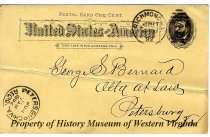
-
John E. Laughton letter of June 20, 1892 - June 20, 1892
Note from Laughton to Bernard explaining the situation of the Richmond Howitzers. The First (1st) Company of Richmond Howitzers was the battery engaged with Mahone's Brigade at Chancellorsville. The 2nd and 3rd Companies were attached to Jackson's Corps and never connected with either Anderson's Division or A. P. Hill's Corps. The companies were separated at the start of the war, and assigned to different Corps, and never re-united in the same...
Record Type: Archive
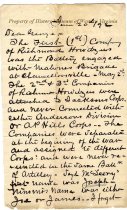
-
John E. Laughton talks to the George Pickett Camp - 1895
Capt. John Laughton gave a talk to the George Pickett Camp of Confederate Veterans about his experiences while attached to the Sharpshooter Battalion of Gen. William Mahone's Brigade. The talk was printed in the Richmond newspaper. The paper was folded and has damage at the fold. A small piece of newsprint is missing at the beginning of the article. While in winter quarters near Gordonsville, Virginia, in 1864, General Mahone conceived the ide...
Record Type: Archive
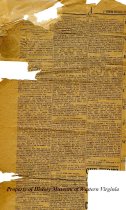
-
John Thomas Parham talks before the A. P. Hill Camp of Confederate Veterans - September 6, 1894
John Thomas Parham was born in Prince George County. At age 18, he joined the 32nd Virginia Infantry regiment, Company "C". Eventually, he was detailed as a color sergeant. In 1864 he was commissioned 1st lieutenant. He survived the war. Later in life, he became a member of the Petersburg City Council, a deputy collector of customs, Deputy Sergeant of the City of Petersburg, Virginia, and in 1896 was a newspaper editor. Background. The Marylan...
Record Type: Archive
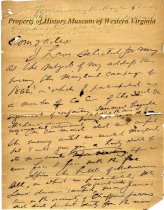
-
Letter from William Mahone to George S. Bernard - July 1895
Letter written by William Mahone to George S. Bernard pertains to the Battle of the Weldon Railroad, in which Mahone's Division participated when it arrived on the scene August 19, 1864. The nine pages are extremely fragile and are crumbling. Where they were folded, the pages are now splitting apart. The letter is unsigned, but, on the reverse of page four, Bernard has made a faint notation that it was from General Mahone. The letter begins by d...
Record Type: Archive
